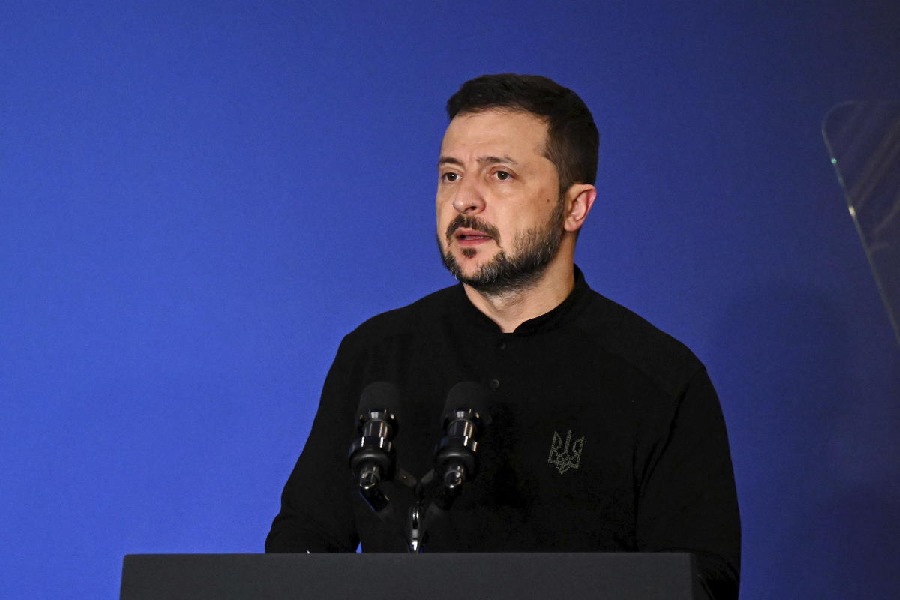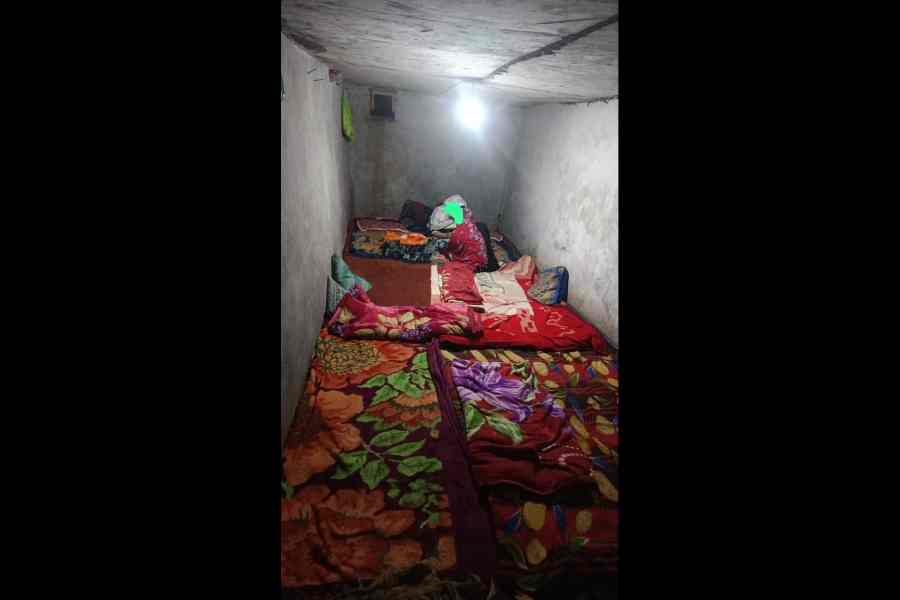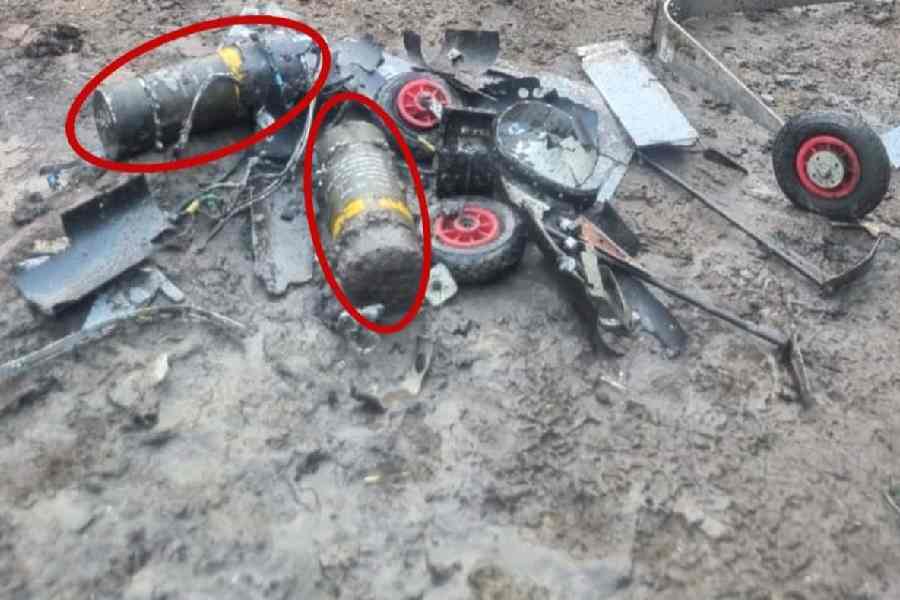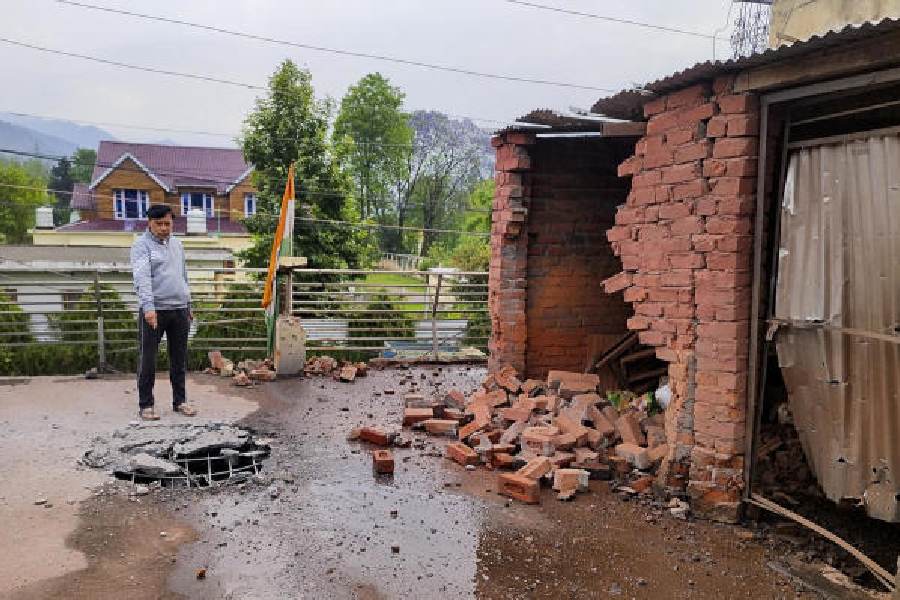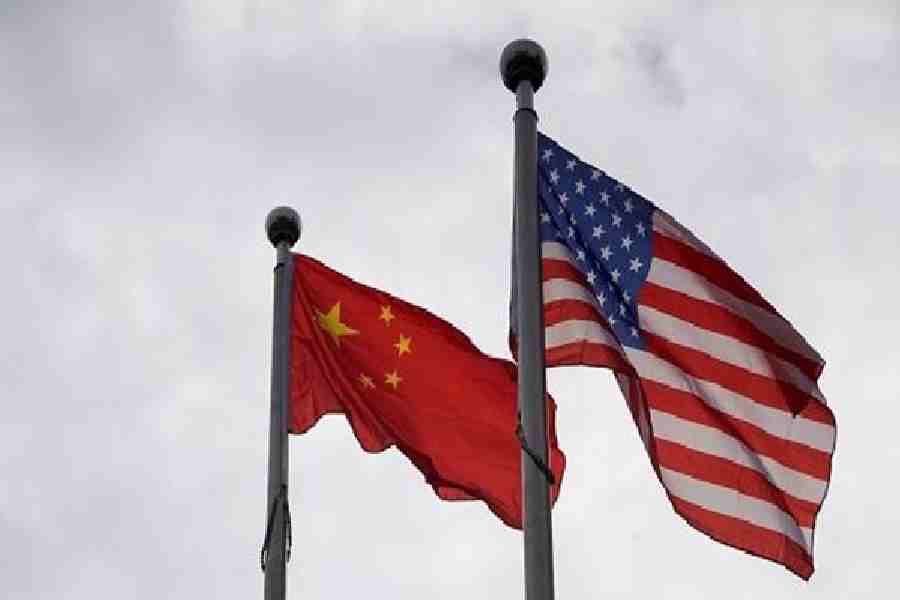 |
| The governor gets his first glimpse of an ancient Chinese terracotta warrior at the Belvedere House hall on Thursday. (Pradip Sanyal) |
Calcutta got a time-travel ticket to ancient China on Thursday with governor M.K. Narayanan opening a much-awaited exhibition of antiquities ranging from life-size terracotta warriors from the third century BC to the refined porcelain of the Qing dynasty.
Treasures of Ancient China will remain open to the public from 10am to 5pm daily till November 7 at Belvedere House of the National Library.
Organised in India by the Archaeological Survey of India, the Union culture ministry and the State Administration of Cultural Heritage of China, the exhibition encapsulates ancient China in 95 historical treasures culled from 10 museums.
The exhibits include stunningly beautiful decorative bronze, jade and gold, but the Qin warriors clearly dominate the well-lit interiors of the newly restored hall. The stars of the show are from Emperor Qin Shihuang’s Mausoleum in Lingtong County of Shaanxi Province, where nearly 8,000 life-size terracotta warriors and horses stand in battle formation.
The two Qin warriors on display measure 188x70cm and 190x60cm. The warriors stand in typical knee-length robes and half-sleeve armours of Qin soldiers, poised to attack. One seems to be holding a bow, the other a lance and a hand resting on a sword at his waist.
It is said that every warrior excavated in the three pits of the tomb wears a different expression. These two certainly do. While one looks sombre, the other is threatening. Visitors would be grateful that neither is cased in protective glass, unlike treasures of similar vintage being put up for display in most museums.
An army comprising warriors like the two on display must have helped Emperor Qin Shihuang (221-207BC) to integrate the warring states of China into a semblance of a united nation for the first time.
Governor Narayanan said it was befitting that “Calcutta the culture capital of India” was getting the opportunity to see these historical treasures and discover the “interlacing characters” of two major civilisations.
A Tagore connect
“The value of the pi was probably being calculated simultaneously as India was discovering the zero. After a long slumber both countries are growing economically and this century will see the flowering of both civilisations,” he added.
The Treasures of Ancient China exhibition was to have been held much earlier in “reciprocation” to an exhibition of ancient Indian Art in four cities of China. The event, which was scheduled to be held in 2006, had to be cancelled and China didn’t proceed with its India show either.
The new ASI director-general, Gautam Sengupta, said it was a happy coincidence that the show was finally being held in Rabindranath Tagore’s 150th birth anniversary year.
Sengupta said Chinese art played an important role in Bengal’s discovery of Asia in early 20th century. The Tagore household was one of the centres of this discovery and the poet was the earliest spokesman of internationalism in art and culture.
Culture secretary Jawhar Sircar said he was happy to see Belvedere House, presently under restoration, hosting such an important exhibition.
The two halls have been beautifully decorated for the show. The exhibits in polished stone, terracotta bronze, jade, gold, red and black pottery, and hand-painted and glazed porcelain are on pedestals or in unobtrusive glass boxes.
“A lot of care has been taken to arrange for special security and display. We hope to organise many other Indo-Chinese programmes while the exhibition is on,” said Tapanjyoti Baidya, the director of ASI, Calcutta.
“The value of the pi was probably being calculated simultaneously as India was discovering the zero. After a long slumber both countries are growing economically and this century will see the flowering of both these civilisations,” he added.
The Treasures of Ancient China exhibition was to have been held much earlier in “reciprocation” to an exhibition of ancient Indian Art in four cities of China. The event, which was scheduled to be held in 2006, had to be cancelled and China didn’t proceed with its India show either.
The new ASI director-general, Gautam Sengupta, said it was a happy coincidence that the show was ultimately being held in Rabindranath Tagore’s 150th birth anniversary year.
Sengupta said Chinese art played an important role in Bengal’s discovery of Asia in the early decades of the 20th century. The Tagore household was one of the centres of this rediscovery and the poet was the earliest spokesman of internationalism in art and culture.
Culture secretary Jawhar Sircar said he was happy to see Belvedere House, presently under restoration by the ASI, hosting such an important exhibition.
The two halls have been beautifully decorated for the show. The exhibits in polished stone, terracotta bronze, jade, gold, red and black pottery, hand-painted and glazed porcelain are on pedestals or in unobtrusive glass boxes.
“A lot of care has been taken to arrange for special security and display in this ancient building. We hope to organise many other Indo-Chinese programmes while the exhibition is on,” said Tapanjyoti Baidya, the director of ASI, Calcutta.


